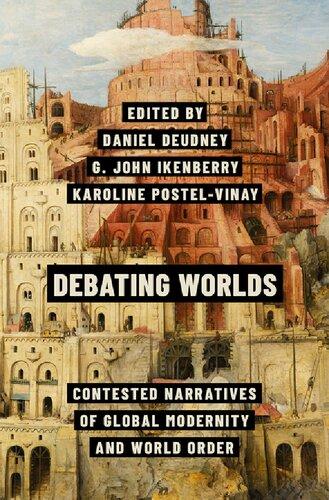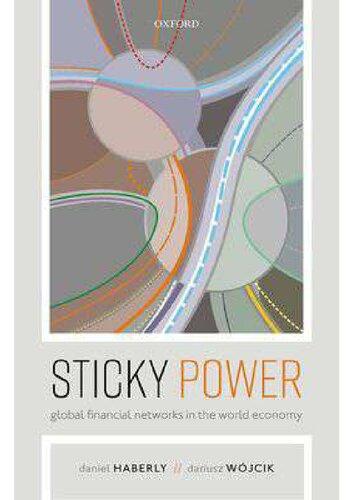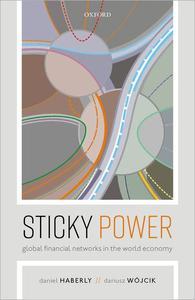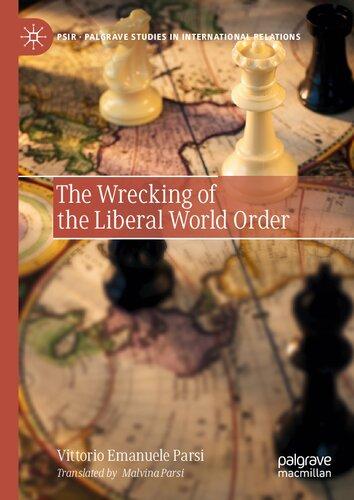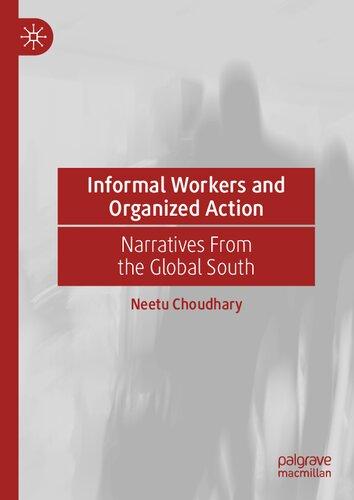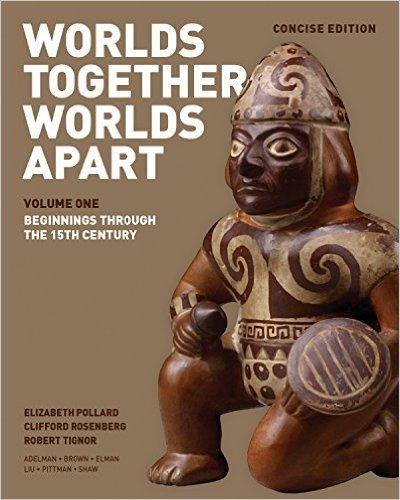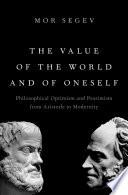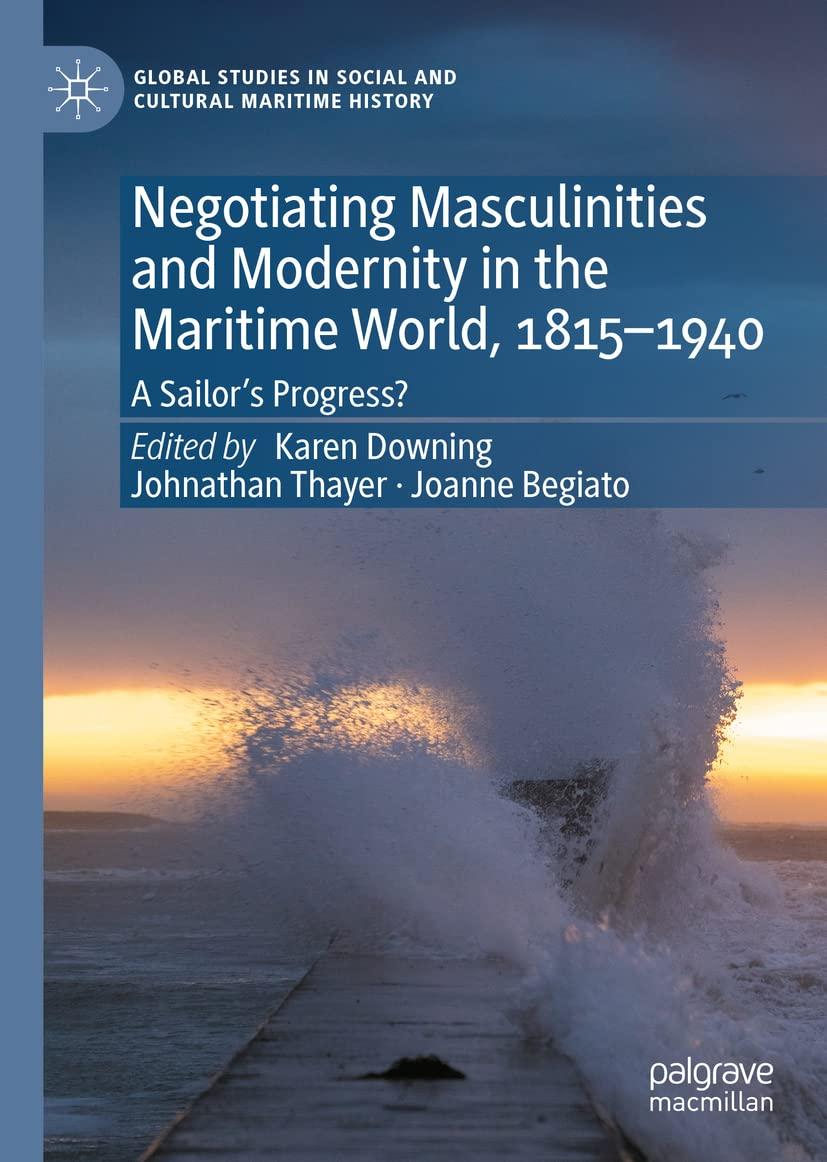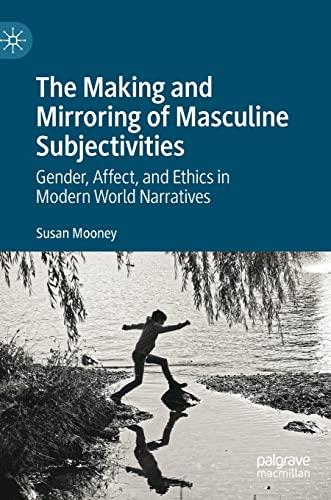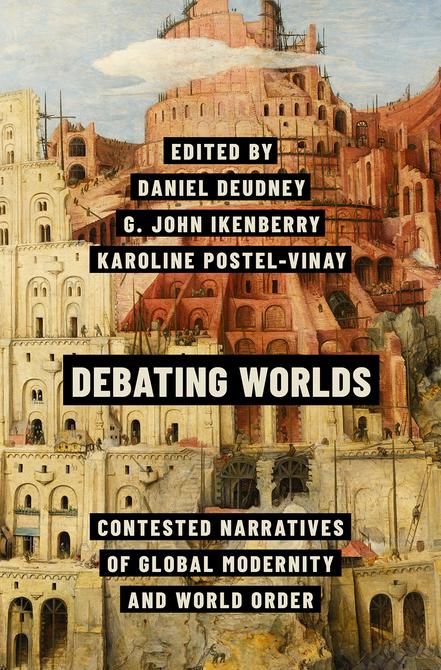Introduction Debating Worlds
Daniel Deudney, G. John Ikenberry, and Karoline Postel-Vinay
By the last decade of the twentieth century, the great questions of modernity seemed to be answered. With the collapse of the Soviet Union and global communism, the liberal democratic capitalist project seemed to be the only one lef standing.1 Te liberal narrative of 1989 was symbolized by the fall of the Berlin Wall. Leonard Bernstein and Beethoven’s “Ode to Joy” provided the soundtrack. Te 1980s and 1990s were decades when the “liberal ideal” spread worldwide. China joined the World Trade Organization (WTO) and all the great powers—East and West—seemed to be converging and integrating as stakeholders into a single global liberal world order. Afer centuries of tumultuous conficts and waves of globalization, it appeared that humanity was on the verge of achieving a worldwide shared understanding, a universal narrative, of how societies should operate—and a narrative of a jointly held brighter future.
Today, this universalistic narrative clearly rings hollow. Te tectonic plates of the global distribution of power have shifed and the preeminence of the West is clearly on the wane. As the West recedes, the Rest have surged in power, bringing with them new stories of the global past and new directions for world order. China is rapidly emerging as a peer competitor of the United States, bringing with it a powerful new global narrative, emphasizing grievance and revision. A decade ago, new narratives of the so-called emerging powers—the BRICS—provided a narrative of global transformation. Political Islam also burst onto the global scene as a multifaceted transnational movement reshaping regional political order and geopolitical alignments. Its narrative centers on a civilizational religion, rejecting secular and Western ways of life. With the rapid advance of climate change—and the advent of the Anthropocene Age—there have arisen new narratives of global endangerment and dystopia, as well as new narratives of science, technology, and the
Daniel Deudney, G. John Ikenberry, and Karoline Postel-Vinay, Introduction In: Debating Worlds. Edited by Daniel Deudney, G. John Ikenberry, and Karoline Postel-Vinay, Oxford University Press. © Oxford University Press 2023. DOI: 10.1093/oso/9780197679302.003.0001
environment. Far from converging, fragmentation and contestation increasingly dominate debates over world order.
Challenges to the universalistic narrative have also erupted in the West. Te high bastions of the advanced industrial democracies, the vanguard in the old narrative, have fallen on hard times. Economic decline of the working class, the fnancial crisis of 2008, the rise of extreme inequality, and renewed racial turmoil have all called into question the viability of the progressive liberal narrative in the United States and Europe. Te new media environment of the internet has eroded civility and amplifed grievances. With these setbacks, there has been a rise of right-wing and illiberal movements, organized around authoritarian parties and governments across the West. In Europe, the project of union has been undermined by Brexit. Te spread and deepening of democracy have been challenged and reversed by rising ethno-centric and illiberal nationalism, especially in Poland and Hungary. In the United States, which had styled itself as the indispensable leader of the free world for the better part of a century, the election of Donald Trump was an abrupt shock and regression. Under the banner of America First, Trump actively undermined and subverted American multilateral leadership and global problem-solving. Across the world, the “third wave” of democratization rising afer the Cold War has rapidly receded. With the growing power, self-confdence, and ideological assertiveness of authoritarians and even totalitarians, the future seems to be trending strongly against the universalization of Western liberal democratic modernity.
As the dominant narrative of the West has waned, a new plurality of narratives has emerged. Each of these narratives combines stories of the past with understandings of the present and attractive visions of the future. Competing narratives have always existed, but over the last several decades, narrative plurality and contestations have become increasingly salient. Given these new realities, a primary task for theorists of world order must be to map these narratives. Tis task requires an understanding of the key features of narratives, their origins, and their roles in struggles over world order. In short, narratives are an important part of all world orders, and no understanding of contemporary politics and the prospects for confict and concord in the future can fail to take them into serious consideration.
Te narratives prominent on the contemporary world stage are a volatile mix of components. Not only are they very diferent from one another, they are themselves internally heterogeneous and contested. Tey ofer diferent understandings of the past, present, and future. Some are “pre-Western,”
predating the encounter with Western global modernity. Some are clearly Western in origin and character. And some are vigorously anti-Western. Tey also difer in regard to their scope. Some are regional and civilizational, without global aspirations. But others cast themselves as globally expansive and universally ambitious. Tey are defned in diferent degrees by their antagonism with their alternatives, ranging from essential indiference to vigorous hostility. Many view this new discursive plurality as a welcome liberation from the experience of an oppressive and unwanted hegemonic and imperial Western narrative of modernity.2 One way or another, it is the interaction of these diverse narratives that will in some signifcant measure shape debates and struggles over world order in the decades ahead.
Tese narrative clashes have frst-order, real-world implications. Te essential feature of the contemporary global and planetary era is that all the parts of fragmented humanity are now embedded in a planet-wide mesh of cascading interdependences. In a rapidly globalizing and changing world system, beset with major global problems—ranging from nuclear war to pandemics to climate change—this vigorous dissensus casts a darkening shadow over humanity’s future. Tis cacophony and strong contestation over the fundamentals of world order diminish humanity’s capacity to avoid confict and solve global problems of increasing magnitude.3 Whatever the attractions of the past, of historical grievances, or disputes about preferred cultures and ways of life, and whatever their posture toward liberal and Western modernity, the fractious branches of the human world are all dependent on the competent global management of increasingly potent technologies and the onslaught of climate change.
In a world marked by clashing narratives, global cooperation is becoming precarious. Russia’s invasion of Ukraine is a stark reminder that large-scale confict, and even nuclear war, could be increasingly difcult to avoid. Beyond hard-power politics, what is at play in Russia’s aggression, along with China’s de facto support, is the volatile signifcance of global connectivity fueled by contradictory interpretations and stories. Global regulatory capacities are decaying, and so is the possibility of addressing global challenges such as climate change, pandemics, or the rise of extreme inequality. Te Covid-19 sanitary crisis exposed yet again a ferce worldwide narrative contestation described by Josep Borrell, the European Union High Representative, as a “global battle of narratives”4 that impacted the management of the crisis. In short, this new battle of narratives arrives just at the moment when humanity faces its greatest need yet for common understanding and collective
action. Given these disturbing realities and trends, this volume is motivated by the hope that an improved mapping and understanding of these diverse narratives and their interaction can contribute to the reviving and reshaping of a universalistic project that is both truly universal, signifcantly pluralistic, and responsive to the imperatives of global problem-solving.
Our aim is to examine on their own terms many of the major narratives of global modernity and world order that have emerged and clashed across the past several centuries. As a frst step toward this goal, the next section considers the character and importance of narratives in world politics. Te following section examines the key feature of global modernity and Western liberalism about which the major narratives explored in this volume have been preoccupied. Te fnal section introduces and overviews the historical cases.
What Are Narratives in World Politics?
Narratives are stories that people tell themselves about the world they live in, their role in it, and what they should be doing. Narratives are a ubiquitous feature of the human world and play important roles in politics. Tis fact has been widely recognized. In recent years, extensive work on narratives has been pursued by scholars of both the humanities and social sciences. Narratives are a central focus for psychologists, theologians, and philosophers. Popular culture and politics are permeated with competing narrative constructions of many types and grades.
Looking across history, narratives have played ofen prominent roles in politics and international afairs. Narrative constructions play a powerful role in the founding of cities, religions, states, and empires. For all their profound diferences, successful founders such as Moses, Mohammad, Madison, Hitler, and Lenin were storytellers as much as organizers. And in periods of great upheaval and challenge, leaders such as Napoleon, Lincoln, Bismarck, Franklin D. Roosevelt, and Churchill were successful in part because of their skill of articulating and reafrming narrative stories of history, identity, and purpose. As the clash of narratives between Russia’s President Putin, Ukraine, and the West reminds us, the battlefelds of politics are as much narrative wars as clashes of arms.
At the most general level, narratives in world politics are “big stories.” Tey are produced, as in any storytelling process, by individual or collective
storytellers who assemble disparate events, data, and beliefs into a narrative form that makes sense of the past, the present, and the future.5 Political narratives are accounts that mix empirical claims about the past and present with privileged values and preferred futures.6 Narratives ofer answers to the questions that all peoples ask: who we are, how did we get here, and where are we going? And they seek to address these questions in ways that orient actors toward political action, thus answering the perennial question: what is to be done?
Our focus is on a subset of political narratives that we call “narratives of the global.” Tese are macro-stories that actors generate to make sense of their place in the long span of historical global development. Narratives of the global purport to explain how particular groups got to where they are, and where they are going on the world stage. Looking at macro-narratives of the global over the past several centuries shows many quite diferent narratives of the global. Tey include characterizations of relative power, the degree of interconnectedness, and ideas about the nature of global modernity. Tese narratives and the agendas that they support point toward specifc world orders, patterns of authority, identity, and legitimacy. In world politics, narratives are deployed as calls for universal action or to help set international codes, norms, and rules. While always speaking to the whole, global narratives also embody the perspectives and experiences of particular peoples.7 At the center of every narrative of the global is an actor—a people, a country, a movement, a religion, a civilization—whose interests and predicaments are the focus.
Narratives also have important performative aspects.8 Teir exponents make great eforts in embodying key narrative points in popular song, monumental architecture, commissioned art, and public ceremonies.9 Te key features are cast to be seen and emotionally captivating. For example, environmental narratives have typically entailed visual communication and collective performance, such as Al Gore’s presentations of Te Inconvenient Truth or Greta Tunberg’s Fridays for Future.10 Taken to the extreme, the public performance face of narratives not only can become the basis for special mass ceremonies, but also can be woven into texture of ordinary life in encompassing ways. Authoritarian governments, operating with the tools of unchecked state power, have produced total regimes that have sought to bring every aspect of life into conformity with what are deemed to be the edicts of their narratives. While most narratives of global modernity either do not have totalizing aspirations or have been unable to realize
them, all have performative manifestations that are essential tools for recruitment and education and the mobilization of collective action on a large scale. Te performativity of narratives has a naturalizing power. By combining political agendas and worldviews with emotional power and widely shared understandings and values, narratives are able to contain internal contradictions, discrepancies, and deviations and the inevitable gaps between the narrative storyline and real events.11
Finally, narratives have wide appeal and important impacts because they seek to respond to pressing and important actual situations and problems. When new problems arise and crises erupt, narrative revision and reformation frequently result. Big problems, major setbacks, and fundamental novelties compel actors to rethink their narratives. Treatening changes in circumstances require new ways of doing things and the mobilization of collective action, thus entailing the recasting of the narrative script. For example, when the Industrial Revolution brought scattered and low-skilled peasants into factories and cities, the pre-industrial agrarian narratives of ancien régimes were no longer adequate. To reclaim their political usefulness, narratives have to account for and incorporate, both discursively and politically, new actors and problems. As a result of this dynamic interplay between real-world problems and shared stories and understandings, narratives rise, fall, and evolve in major ways. Hence narratives succeed, fail, and change in signifcant measure as a result of their strengths and weaknesses in illuminating problems and predicaments and guiding actors in their problem-solving pursuits.
In sum, narratives are norm-infused cognitive maps that provide overarching stories of the past, present, and future in ways that frame and guide practical action and problem-solving at a societal—now increasingly global—scale. When the map in a narrative story ceases to capture important parts of reality, actions guided by the old map are unlikely to be responsive and can ofen be disastrous. Given these features of narratives, major rifs, common problems, and new directions can be identifed across the global space of modernity. By looking at narratives in this way, an important dimension of world politics in the modern global era is illuminated.
Studying Global Narratives
Within the humanities and social sciences, the study of narratives, or “narratology,” has been extensively developed. Te study of narratives is an
integral part of literary studies and criticism.12 Te diference between a chronicle and a history is a narrative, and historians recognize themselves as storytellers. Advocates of “Big History” promote educational curricula in order to disseminate an appreciation of the temporal and special impacts of human agency.13 Communication theorists study narratives.14 Empirical social scientists study the role of narratives in society, economics, and politics.15 Political scientists have identifed the importance of narrative for institutions and collective action.16 Political historians and analysts of elections study the role of clashing narratives in election campaigns and presidential policymaking.17 Among international relations theorists, postmodernists and constructivists have explored the ways in which discourses and narratives permeate politics.18 As scholars such as Tomas Risse, Nita Crawford, and Martha Finnemore have demonstrated, many of the great global struggles, such abolitionism and decolonialism, entailed the construction and wide dissemination of new stories that prominently feature moral arguments.19 International relations (IR) theory has experienced a “narrative turn” inspired by subject-centered methodologies used in other disciplines, notably history.20 Te study of foreign policy-making has also analyzed the infuential role of strategic narratives.21
A prominent tendency in thinking about narratives with wide infuence has been the efort to subvert, debunk, and abandon narratives, and particularly grand narratives. Te particular target of anti-narrative thinking has been the grand Enlightenment vision of human progress and liberation, and the various narratives and ideologies associated with it in late-modern politics. In the nineteenth century, a new hermeneutic of critique and suspicion of powerful social narratives was developed by many thinkers, especially Ludwig Feuerbach, Karl Marx, Friedrich Nietzsche, and Sigmund Freud. Teir basic insight was that the organized ideas prevalent in society were essentially a sham—edifces of ideas designed to bolster the interests of powerful groups. Tus was born “critical theory,” which entailed the systematic analysis of the reigning stories of modernity. Tis type of thinking was further developed by the members of the Frankfurt School in the interwar period, and then by postmodern anti-structuralists, most notably JeanFrançois Lyotard, Michel Foucault, and Jacques Derrida, who emphasized the unreliability of language and the ultimately arbitrary character of all human claims, including those ofered by natural science.
In the later years of the twentieth century and beyond, this comprehensive posture of suspicion became vernacularized. On both the right and lef,
this debunking move has been increasingly absolutized and universally applied. In the face of this extensive radical suspiciousness, and amplifed by the novel features of the internet-dominated information environment, facts have become suspect, disinformation rampant, and conspiratorial thinking widespread.22 Critics of this powerful secular tendency, from the old lef and right and center, question whether civil peace, democratic accountability, and the competent operation of government can be maintained without shared narratives and other common understandings, both empirical and normative.
Despite these debates, narratives are a distinctive social phenomenon, a composite mixture of diferent types of ideas, visions, theories, interpretations, and agendas. Tey draw from the past and they claim to embody something of prime importance from the past. Tey are constructed from selective social or “collective memories”23 of the past, exaggerated facets of the past, and even largely imaginary renderings of the past.24 In their most widely disseminated versions, narratives of the global ofer selective histories, simplifed in a story that can be widely grasped. Tey are also ofen associated with a grand political tradition such as liberalism, revolutionary socialism, or national statism. Tese narrative traditions have founding visionaries and thinkers, classical texts, complex lineages of arguments and debates, and interpretations of pivotal events.
Global narratives encompass both causal and normative claims. Tat is, they have accounts and theories about the way the world works, intermingled with normative claims about how the world should work. Integral to narratives of the global are political projects, ongoing programmatic eforts by leaders, activists, and movements working across time to realize their agendas. Te narrative’s sense of inheritance, lineage, and genealogy provides the foundation and legitimacy for shared beliefs about the past in order to inspire and direct mass action in chosen directions. Narratives also contain various futures, some vague and normative, others elaborate and specifc. Among the many narratives that have existed across history, the limited set of narratives considered here have in common sweeping stories speaking to challenges and experiences of global modernity.
Te concept of narrative has afliations and overlaps with other important discursive concepts, most notably ideology, worldview, and cosmology. Diferent analysts defne these concepts in diferent ways. Some view ideologies as ubiquitous across human experience, but others emphasize that the term dates to the period of the French Revolution, and others view
political ideology as a distinctively late-modern discursive phenomenon.25 However these terms are defned, the focus here is on large stories in global modern politics. Despite these analytic diferences, there is general agreement that ideologies are confned to the sphere of politics, political economy, and social order. Narratives are also complexly related to the concept of worldview or weltanschauung. Worldviews are best seen as even more comprehensive than narratives and, like narratives, not solely confned to politics.26 A prominent feature in worldviews is an understanding of the natural world, and indeed much of the theorizing of worldviews has emphasized the increasingly infuential role of successive scientifc revolutions. For many analysts, the shif from human pre-modernity to modernity has entailed a shif in worldview. In a less comprehensive scale, worldviews are thought to be a universal trait of human culture, psychology, and society. Tis way of thinking about worldviews opens the door to micro-sociological and therapeutic investigations. Another related ideational formation is cosmology, which is also at play in changing ways across history. In common Western analysis, cosmology refers to ideas and representations about the natural world at its largest scale.27 From the beginning, cosmological analysis was focused on the sky, and it has been the project of astronomy to accurately grasp these realities. In part because of the profound revolutions in astronomy beginning with Copernicus and Newton, some recent analysists have used the term cosmology to indicate what previously was considered a worldview.
Te actor-centric character of narratives means that narrative analysis must distinguish between four diferent types of investigations. On the one hand, there is the project of evaluating, assessing, and testing the truth content of the claims in the narrative and the project of constructing and modifying narratives in some signifcant way. On the other hand, are the projects—the focus of this volume—of providing genealogies of the content of the narratives, and explaining the roles and impacts that agents acting on the basis of narratives have had in world politics.28 Consistent with these distinctions, the chapters in this volume are not attempts to test and evaluate the content of the narratives. Nor are the chapters attempts to construct or improve narratives. Rather, the chapters are genealogies and investigations of the impacts of agents articulating and acting out narratives. Tus, our task is not to provide new or improved liberal, Islamist, Marxist, civilizational, or other theories of global modernity and world order. Rather, the objective is to analyze the content, function, evolution, and impact of narratives of modern
global world order as they have been defned and wielded by political actors across time and space.
Te West, Global Modernity, and Narratives of World Order
For several millennia prior to European-led globalization and its subsequent globalizing waves, much of humanity lived in societies ordered and guided by powerful and long-enduring narratives. Tese comprehensive narratives typically had a religious cosmology and ethical system at their core. Tese narratives commonly cast themselves as universal, but their actual sway was never more than regional (such as the Sino-centric “world under Heaven” or tianxia, or the Arab vision of Muslim community or ummah). Tey changed very slowly over time and they looked primarily to the past, and their vision of the future tended to be static. Teir axial storyline was religious, incorporating natural, historical, and supernatural elements. While they were all quite parochial and particularistic, they also had important similarities in the types of agencies privileged and the problems they addressed.29 Tese similarities refected a fundamental basic similarity in material circumstance. Tey were agricultural societies in which elite stratifcation on the basis of domination had been crystallized into hierarchical political structures with elite rule cosmically hallowed. Te vast majority of people in these societies were quite poor, chronically oppressed, and illiterate. Te civilizations of the long agricultural-society millennia ofen borrowed from one another.30 In some parts of the world they were in intimate and clashing relations, such as between Islam and Latin Christendom in the Mediterranean region. But the overall pattern of human civilization was marked by many worlds whose interaction at distance was severely restrained, perhaps most extremely in the isolation of the Aztec and Inca empires and civilizations from Eurasia. Te narratives from these earlier civilizations have not disappeared during the modern global era, because they form the baseline against which modern civilization has interacted. Tey also still provide the narrative resources from which many contemporary global-scale peoples, societies, and movements are drawing and trying to keep alive and relevant. As it is widely and inescapably recognized, the world began to radically change a half-millennium ago with the beginning of modernity and globalization. Te wellsprings of this change were European innovations in
technology and organization that revolutionized the production of violence and wealth. With new military and economic advantages, Europeans began expanding their reach and power on an unprecedented global scale. With their rapid mastery of ocean space, the Europeans began interacting aggressively with people scattered across global distances.31 Fueled by capitalism and interstate rivalry, Europeans continued to rapidly innovate and grow in relative power, so that by the later nineteenth century, European empires and settler colonies dominated almost all the earth and almost all humanity.32 From the standpoint of the peoples and societies who were conquered, dispossessed, enslaved, and killed, European globalization ranged from traumatic to catastrophic. Te narratives of the vast majority of humanity, and particularly of the great pre-modern agricultural civilizations, were upended. As a result, the pattern of narrative development over the past several centuries has been necessarily responding to, and shaped by, the threats and opportunities of global modernity and European expansion.
Radical narrative disruption and innovation also occurred in the West throughout this period. Narrative contestation and evolution within the European-centered explosion of modernity was extensive and rapid. At its inception, European global modernity was a narrative revolution in cosmology, astronomy, and methods for acquiring knowledge. From the beginning, the prophets and thinkers of modern science anticipated that their new method of acquiring and accumulating usable knowledge about nature would permit those who possessed this knowledge to fantastically augment their military and economic capabilities. From the beginning, the modernity that originated in Europe was radically revolutionary in its implications for the foundational activities of human life and it also assumed universal spatial global application. By the Enlightenment of the eighteenth century, this narrative had spread through European-wide networks of scientists, engineers, and entrepreneurs, and it had started to realize its program with an outpouring of powerful and efcient machinery for factory production and massively more destructive weapons.33 It was this explosion in technologies, techniques, and organizations that propelled the Europeans from their peninsular marginality to unprecedented global dominance.34
At the core of this new European civilization’s dynamism was a widely dispersed network of knowledge acquirers, inventors, and explorers.35 Of all the features of this European explosion, it is modern science and the pursuit of technological innovations that have proved to be the most universal and consequential. As these new technological possibilities emerged, European
states, militaries, and business frms became increasingly adept at harnessing and stimulating these new paths to power and wealth.
Within the West, the ongoing revolution of modernity created profound turmoil, revolutions, counter-revolutions, and religious wars and ideological struggles, all accompanied by ferocious narrative contestation. Te “new modern” posed fundamental challenges to the inherited pre-modern worldview in every dimension—cultural, economic, political, and social. Like its agricultural society siblings elsewhere, Latin Christendom ofered a narrative that integrated everything. Culturally, the static and closed medieval worldview was challenged by a radical new cosmology that was purely secular, open-ended, dynamic, expansive, and innovative. Te economic fabric of agricultural civilization was marked by subsistence production, class domination, and technological stagnation. Tis order was successively supplanted by market capitalism, production for the market, expanded trade, class mobility, and economic growth propelled by technological advance. In the political realm, traditional monarchies and feudal aristocracies based on inheritance and sanctioned by religion gave way to bureaucratic states, wider participation, meritocratic advancement, rational realpolitik, and enlightened despotism, and then to constitutional republican and liberal democratic rule. Modernity also brought societal revolution with rapid urbanization, new forms of class stratifcation, and an explosion of new professions, occupations, and educational institutions, elevating technical expertise in all realms of life.36
Tese changes were accompanied by vigorous narrative contestation and innovation, over both minor and fundamental questions. As these new powers and riches swelled Europe’s role in the world, new European narratives of confdence and exceptionalism fourished. Initially, some located Europe’s special role as rooted in Christian religion, with narratives of people divinely chosen and anointed.37 But a wide array of triumphalist and exceptionalist European narratives were radically secular. Tey were all addressing the question of what made Europe so exceptionally successful. Some such narratives were civilizational, elaborated in economic, sociological, and anthropological stages of human development, starting with barbarism and savagery and culminating in European enlightened civilization. Another narrative was geographic, emphasizing the ways in which European climate and topography were uniquely stimulative of civilizational advance.38 Related narrative explanations emphasized European political and economic freedom as the unique prerequisite for advance.39 By the nineteenth century,
when the machine products of the Industrial Revolution were so powerfully changing the world, European narratives of civilizational identity exalted technological progress itself as the defnitive marker of European superiority.40 Another narrative lineage of European superiority was racial, a view which became elaborately developed with the trappings of biological science and Darwinian-inspired evolutionary biology.41 Despite these diferences, these narratives of European superiority provided various justifcations for European imperial and colonial expansion.
Among the narrative innovations in early modern Europe, perhaps the most novel cluster of ideas is centered on the freedom of individuals and a democratic vision of expanding wealth and power to include everyone in societies. Modern liberals and democrats not only championed the new modern, but also claimed to be its appropriate—even necessary— companion. Just as the intricacy of European scientifc and technological knowledge exploded, so too political theorists generated a sophisticated array of freedom claims, arrangements to support freedom, and measures to liberate the oppressed and extend a thickening array of human rights to steadily widening communities of humans, starting inside nations but eventually extending universally. From the outset, the prophets and thinkers of both scientifc and technological modernity and liberal democratic progressivism proclaimed that their new paths were comprehensively revolutionary and inevitably universal ways of realizing the most basic human aspirations. Both these scientifc and freedom narratives of modernity were from their birth strongly future-oriented, illuminated by a rich tapestry of utopian endstates and progressive pathways.
As the modern period unfolded, a cluster of very infuential ideas formed and reformed, a Western liberal narrative of global modernity and world order. Its frst appearance at the edges in small mercantile citystates, scattered in the nooks and crannies of the European world, was a Renaissance revival and extension of ancient Roman republican ideas and ideals. With the success in England of the parliamentary party and the establishment of constitutional monarchy, the freedom narrative was further developed both ideologically and institutionally. Ten the great democratic revolutions in America, France, and elsewhere marked the great spatial widening and broadening of the modern liberal democratic narrative and order. Tis emancipatory vision attracted the oppressed throughout Europe and its colonial extensions and across the world. By the nineteenth century, a core liberal democratic package had been assembled.42 Its domestic parts
combined constitutional government, rule of law, representative democracy, private property capitalism, civil society, and evolving protections for individual rights. Internationally and globally, the full project included antiimperialism, national self-determination, the abolition of slavery, free trade, international law, disarmament and arms control, international communitybuilding, and joint problem-solving.43 If this path were realized, its advocates insisted, the overall human estate would be profoundly improved. Te actual practices of Western states and peoples across the modern era ofen fell quite short of this progressive liberal democratic pathway. But this narrative has never been fully dominant, even in the West. It has been in continuous struggle with powerful and antagonistic illiberal, anti-democratic, imperialist, and racist ideologies and movements.44 As a result, the overall impact of the West on the wider world has been a mix of liberal democratic and its complete antithesis.
Within the Western heartland of this explosive change, advancing modernization and rising liberal democracy evoked powerful countermovements and narratives. As the juggernaut of modernity and democratization plowed relentlessly forward, counter-movements and resistances sprung up to contain, halt, or reverse it. Te strongest Western opponent of the new civilization was the old religion, as the Roman Catholic Church tenaciously fought across centuries to combat secularism and the overthrow of traditional hierarchies. Te feudal ancien régime in the countryside vigorously resisted the encroachments of modernity and challenges to its established privileges and power. A particularly stark version of these dynamics occurred in France, where the Enlightenment weakened, and the great revolution overthrew, a somewhat modernized medieval order that quickly reformed itself as a counter-revolutionary anti-modernism in the early nineteenth century.
Another counter-reaction was spawned by the discrepancies between the ofen-horrifc socioeconomic conditions of the industrial working class and the ideals of the progressive liberation narrative. Out of this crucible, Karl Marx and other radical socialists fashioned an intellectually powerful and widely infuential narrative of the modern in which capitalism and extreme individualism would be a passing stage on the road to a world of workingclass hegemony and economic socialism. Te fact that capitalism in its most illiberal and undemocratic form had become coercively globalized by the Europeans meant that the Marxist alternative-freedom narrative would have global appeal.
On the right, another counter-modern and anti-liberal democratic opposition centered their narrative of resistance on a cultivation of particularistic ethno-nationalism and elaborate racial ideologies and world orders. Also, on the right, autocracy and all-consuming state power were elaborately theorized and employed to resist political democratization and liberal individualism.45 Te right-wing counter-narratives ofered visions to sustain European global supremacy while at the same time envisioning a world order in which Europe would jettison its universal and imperial aspirations and cultivate a particularistic and non-universal path in modernity.
Outside the West, fundamental narrative contestation and revision have taken place all over the world, as peoples in every corner of the globe sought to respond to the encroachment of European infuence and the enormous efcacy of the new European ways. In some of the earliest cases of rebellion against the West, in North America and the Caribbean, the American and Haitian revolutionaries turned the universalistic narrative of liberation into a powerful tool to mobilize against European imperial rule.46 In the densely populated and long-developed civilizations in Eurasia that the Europeans forcefully intruded themselves upon, various forms of collective defensive modernization became extensive.47 For example, many in Japan and China initially thought they could import the power and wealth-producing technological innovations of the Europeans to bolster their capacity to resist European predations—without compromising their civilizational cosmologies, social systems, and political orders. But strategies of containing modernity typically proved infeasible as new technologies, such as railroads, steamships, telegraphs, and modern factory production, generated problems and created needs which the earlier civilizational maps and scripts were unable to meet.
As material modernization progressed, ancien régimes all over the world found themselves confronted by rising classes of merchants and workers and educated elites who carried not just Western technical skills but also Western ideals and political ideologies. For example, afer several centuries of evolution, the Chinese civilizational narratives and world-order vision is an amalgam of imports—Marxist and socialist, economic capitalist, and Schmittian authoritarianism. As this has happened, the civilizational legacy of millennia of Mandarin civilization has been relegated to little more than decorative trimmings and the raw materials for yet another modern ethnocultural nationalism, albeit with an international outreach, especially in the Global South.48 One of the most powerful exports from the West over
the course of the past century has been the European nation-state. As anticolonial, anti-imperial, and anti-racist thinkers and activists across the global European imperium sought to mobilize their populations to successfully rebel against and build the organizational capacities to sustain their independence and enlarge the wealth of their societies, Western models proved irresistibly attractive. In the wake of the great global expansion and rebellion, the narratives in all parts of the world are now amalgams in which indigenized European forms of modernity are predominant. Tis means that the pattern of narrative talking worlds is a novel mix of convergence and bricolage, and that the fault line of narrative contestation that occurred and is occurring in the West is now occurring, with various particularistic infections, essentially everywhere.
Road Maps and Chapters
Te dominant narratives of the global have been written in the West. Echoing the historical advance of global integration, with its major nodes in Europe and North America, these narratives have taken diferent forms, organized around an array of recurring leitmotifs. Tey tend to tell the story of the Western global ascendancy, driven forward through the nineteenth and twentieth centuries by, variously, the protean forces of capitalism, industrialism, democracy, liberalism, nationalism, internationalism, imperialism, hegemony, civilization, liberal modernity, and great power politics. Tese have been stories of the “rise of the West,” told as European, Anglo-American, and Western civilizational dramas.
Tis project seeks to step outside of these traditional Western parameters and highlight a wider array of narratives of the global—narratives of how diferent peoples, societies, and cultures have envisioned, shaped, and transformed the world in the modern era. It also aims at moving away from the monolithic image of the “West” to which “non-Western” or “de-centered” perspectives tend to refer, by showing the tensions and contestations that sustained divergent narratives of the global within the West. By gathering and juxtaposing these diverse stories, within and beyond the West, we hope to enrich the historical, conceptual, and contemporary ways in which we talk about the unfolding world system. Hence the core purpose of this volume is to look at the major narratives of the global that have tried to explain— since the nineteenth century until today—the meaning and consequences
of an ever growing economic, political, and cultural interconnectedness on a global/planetary scale. What sorts of “orders” are out there? What are the big stories that existed alongside the dominant narratives of the global, and that we can go back to and expose? And what voices and strands of global thinking can we bring into the current debate?
Te frst two chapters discuss two narratives of the global that are intrinsically linked to the European experience: the narratives of Empire and of Revolution; respectively rooted in Great Britain and its territorial ofsprings, and continental Europe and Russia. In Chapter 1, Duncan Bell analyzes the persistent narrative of global order that focuses on claims about the purported superiority of the “Angloworld”—a grouping of countries centered on Great Britain, the United States, Australia, Canada, and New Zealand. Originating in nineteenth-century British and American debates about the role of race and empire, it assumed new forms and a new terminology across the twentieth century. Today it has been articulated in a variety of contexts, above all the ferce debates about Brexit. Duncan Bell suggests that elites throughout the Angloworld have repeatedly articulated visions of an integrated geopolitical and economic unity, grounded in claims about a shared identity and political destiny, capable of playing a pivotal role in global afairs. At their most radical, such projects have imagined a form of global domination based on claims of racial superiority. Afer outlining the overlapping fn de siècle debates about the idea of Greater Britain and the possibilities of an Anglo-American (re)union, this frst chapter traces the narrative through the twentieth century and into our own time. It delineates four models of world order rooted in claims about the Anglo world integration: Anglo-American, imperial-commonwealth, democratic unionist, and world federalist. It concludes with a discussion of post–Cold War accounts of Angloworld supremacy.
Across the English Channel, the European nineteenth century witnessed the production of various narratives of transnational revolution, accompanying the 1848 upheavals throughout the continent, and opening the way to the unfolding, in the early twentieth century, of a major script, written in the West and reinvented in Russia. As Michael Cox argues in Chapter 2, the Soviet Union created a singular narrative of its own that challenged Western notions of progress and modernity in very basic ways. Combining together threads drawn from Karl Marx, ideas developed by Vladimir Lenin, a significant set of easy-to-understand axioms outlined by Joseph Stalin, and latterly a range of new ideas about peace and the construction of socialism, put into
practice by his various successors—including the last Soviet leader Mikhail Gorbachev—this narrative provided a ready-made road map of the past, an immensely powerful critique of the present, and a vision of a future which proved immensely attractive to millions of people for a good part of the twentieth century. Moreover, even if the USSR disintegrated, it lef behind a set of ideas that continue to inform critical thinking about the liberal order and the contemporary international economy into the twenty-frst century. Te state with which this narrative was most closely allied might have gone; however, the narrative itself, shorn of some of its more dogmatic features, still shapes the discussion about the future of the world today.
Te following two chapters explore narratives engendered by the encounter with European power in the late nineteenth century of two non-Western societies: the Muslim world and Japan. Neither are counter-narratives standing up against Western domination; rather, they provide alternative narratives of modernity aiming at mitigating the impact of Euro-centrism on the non-Western world. In Chapter 3, Cemil Aydin interprets modern PanIslamism as one of the contested narratives of the world order that is universalistic and modern in content rather than rejectionist and reactionary. Parallel to the development of Pan-African and Pan-Asian visions of the global, Pan-Islamic narratives emerged in the 1880s as a globalist response to the inequities of racialized Eurocentric imperial world order. Initially, the idea of trans-imperial Muslim solidarity proposed by Pan-Islamism aimed to give Muslims more rights within European empires and to assert the equality of existing Muslim states in international law while shadowing the Eurocentric narratives of history, progress and civilization. By examining the themes of Pan-Islamic discourse of the world order that emerged during the half century preceding the 1919 mobilization of Muslim intellectuals around the Paris Peace Conference, this chapter assesses the nature of world-making claims and demands on the international order made by Muslim intellectuals and publics. It also discusses the legacies, transformation, and diverse political utilization of Pan-Islamic narratives of the global order during the era of decolonization, Cold War, and the post-Iranian Revolution periods.
Te narratives of modern Japan that Kei Koga and Saori Katada examine in Chapter 4, in a broader historical perspective, are almost a reverse symmetry of the Pan-Islamic story in the sense that they express, frst and foremost, a constant obsession with national singularity. As a “liminal power,” sitting on the edge of the Pacifc, and located between the East and the West, the narrative of Japan on the international scene and within the global history of
modernity has almost continuously been that of Japanese uniqueness. From the Meiji Restoration (1868) to Reiwa era (2019–), whether a rising power or a declining one, the rollercoaster-like historical trajectory of Japan never translated into a story aiming at universal signifcance. Te dominant narrative of Japanese achievement has been that of the only Asian nation that had managed to modernize and militarize in the Western dominant world in the early 1900s, and an economic juggernaut in the 1980s that would forever preserve its unique post-1945 pacifst identity. Although Japan’s successes as a Westernized modern power in the late nineteenth century and a “economic miracle” in the later part of the twentieth century have inspired reformist governments in Asia, the de facto Japanese model did not lead to the production of a narrative with a regional scope, yet alone a universal one. Tis inability to move beyond national uniqueness, Katada and Koga argue, has been an enduring dilemma for Japan’s self-defnition as a global actor.
Meanwhile, during the same long historical stretch that saw the planetary expansion of Western power, the rise of the narrative of global modernity, with its twin head trope of political and scientifc progress, has been bitterly contested within Europe. Chapter 5, by Jean-François Drolet and Michael Williams, excavates the reactionary narrative response to the story of the liberal future that was shaped by this early intra-European contestation and that created a repertoire whose long-lasting political relevance is particularly salient today. Once considered an exhausted vestige of the past, the radical right has indeed re-emerged in the early twenty-frst century as one of the most striking and in many eyes most troubling challenges to the contemporary world order. In “Writing the Right,” Jean-François Drolet and Michael Williams trace the historical lineages of this resurging strand of radical conservatism. While these movements are ofen seen as “knee-jerk” reactions to globalization, the authors argue that today’s radical right also has its own intellectual vanguard that mobilizes long-standing historical narratives and intellectual legacies to produce ideologically and emotionally powerful attacks on liberal institutions and rationalities of government. Only by taking these narratives seriously is it possible to come to terms with today’s radical right and develop compelling and efective responses to it.
Te next two chapters look at the post-1945 narrative trajectories of two major international actors, China and India, who decades before becoming the much-scrutinized members of the BRICS group, have been producing their own stories of the global, made of thick historical texture. In Chapter 6, Rana Mitter traces changing Chinese ideas of the “global” as
